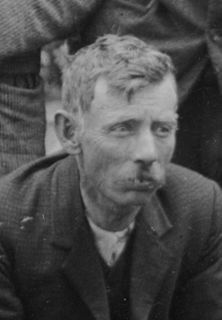| Robin Wayne Carrell | |
|---|---|
| Born | 5 April 1936 New Zealand |
| Alma mater | University of Otago University of Canterbury Lincoln College University of Cambridge |
| Scientific career | |
| Thesis | The unstable haemoglobins (1967) |
| Doctoral advisor | Hermann Lehmann |
| Influenced | Christine Coe Winterbourn [1] |
Robin Wayne Carrell (born 5 April 1936) is a New Zealand-born medical researcher.
Born in 1936, [2] Carrell was educated at Christchurch Boys' High School from 1949 to 1953. [3] He graduated MB ChB from the University of Otago in 1959, [4] and B.Sc. (Hons) in chemistry and biochemistry from the University of Canterbury and Lincoln College in 1965. [2] [5] He completed his PhD at the University of Cambridge in 1967 and in 1968 he was appointed head of clinical biochemistry at Christchurch Hospital, [6] the department later becoming part of the University of Otago Christchurch School of Medicine. As a spin-off from his research he co-founded biotechnology company Canterbury Scientific in 1985. [7] He returned to Cambridge the following year as professor of haematology, retiring in 2003, but as professor emeritus he has continued his research at Cambridge. [6] He retired from the board of directors of Canterbury Scientific in 2012. [8]

Christchurch Boys' High School, often referred to as CBHS, is a single sex state secondary school in Christchurch, New Zealand. It is situated on a 12-hectare (30-acre) site between the suburbs of Riccarton and Fendalton, 4 kilometres (2.5 mi) to the west of central Christchurch. The school also provides boarding facilities for 130 boys in a residence called Adams House located about 500 metres (1,600 ft) to the east. The school's colours are deep blue and black with an occasional flash of gold.

The University of Otago is a collegiate university located in Dunedin, Otago, New Zealand. It scores highly for average research quality, and in 2006 was second in New Zealand only to the University of Auckland in the number of A-rated academic researchers it employs. In the past it has topped the New Zealand Performance Based Research Fund evaluation.

The University of Canterbury is New Zealand's second oldest university.
In 1986 he won the Hector Medal, at the time the highest award in New Zealand science. [9] He was elected a Fellow of the Royal Society of New Zealand in 1980, [10] a Fellow of Trinity College, Cambridge in 1987, [11] and a Fellow of the Royal Society in 2002. [12]

Trinity College is a constituent college of the University of Cambridge in England. With around 600 undergraduates, 300 graduates, and over 180 fellows, it is the largest college in either of the Oxbridge universities by number of undergraduates. In terms of total student numbers, it is second only to Homerton College, Cambridge.

Fellowship of the Royal Society is an award granted to individuals that the Royal Society of London judges to have made a 'substantial contribution to the improvement of natural knowledge, including mathematics, engineering science and medical science'.




